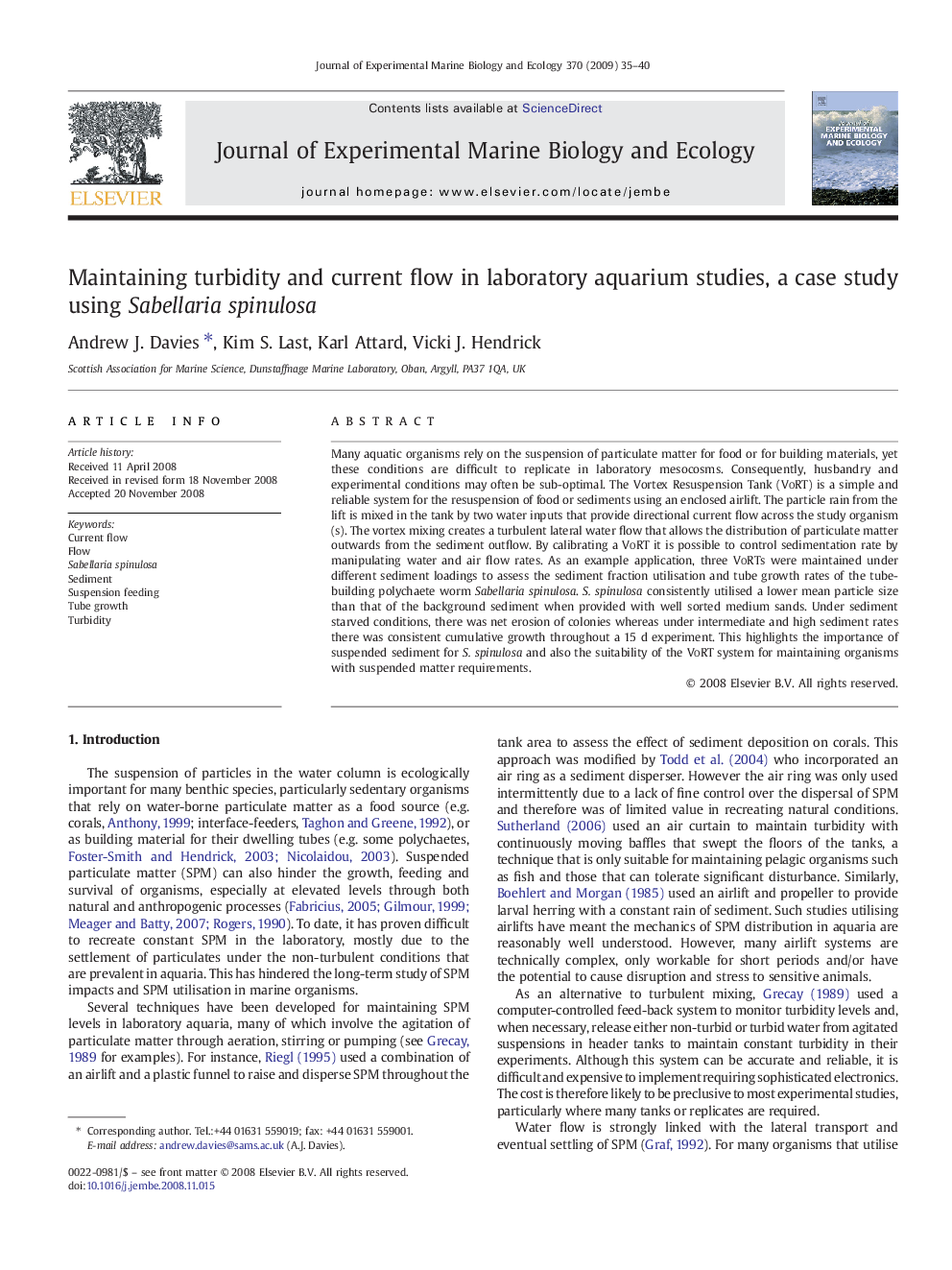| کد مقاله | کد نشریه | سال انتشار | مقاله انگلیسی | نسخه تمام متن |
|---|---|---|---|---|
| 4397030 | 1618482 | 2009 | 6 صفحه PDF | دانلود رایگان |

Many aquatic organisms rely on the suspension of particulate matter for food or for building materials, yet these conditions are difficult to replicate in laboratory mesocosms. Consequently, husbandry and experimental conditions may often be sub-optimal. The Vortex Resuspension Tank (VoRT) is a simple and reliable system for the resuspension of food or sediments using an enclosed airlift. The particle rain from the lift is mixed in the tank by two water inputs that provide directional current flow across the study organism(s). The vortex mixing creates a turbulent lateral water flow that allows the distribution of particulate matter outwards from the sediment outflow. By calibrating a VoRT it is possible to control sedimentation rate by manipulating water and air flow rates. As an example application, three VoRTs were maintained under different sediment loadings to assess the sediment fraction utilisation and tube growth rates of the tube-building polychaete worm Sabellaria spinulosa. S. spinulosa consistently utilised a lower mean particle size than that of the background sediment when provided with well sorted medium sands. Under sediment starved conditions, there was net erosion of colonies whereas under intermediate and high sediment rates there was consistent cumulative growth throughout a 15 d experiment. This highlights the importance of suspended sediment for S. spinulosa and also the suitability of the VoRT system for maintaining organisms with suspended matter requirements.
Journal: Journal of Experimental Marine Biology and Ecology - Volume 370, Issues 1–2, 1 March 2009, Pages 35–40